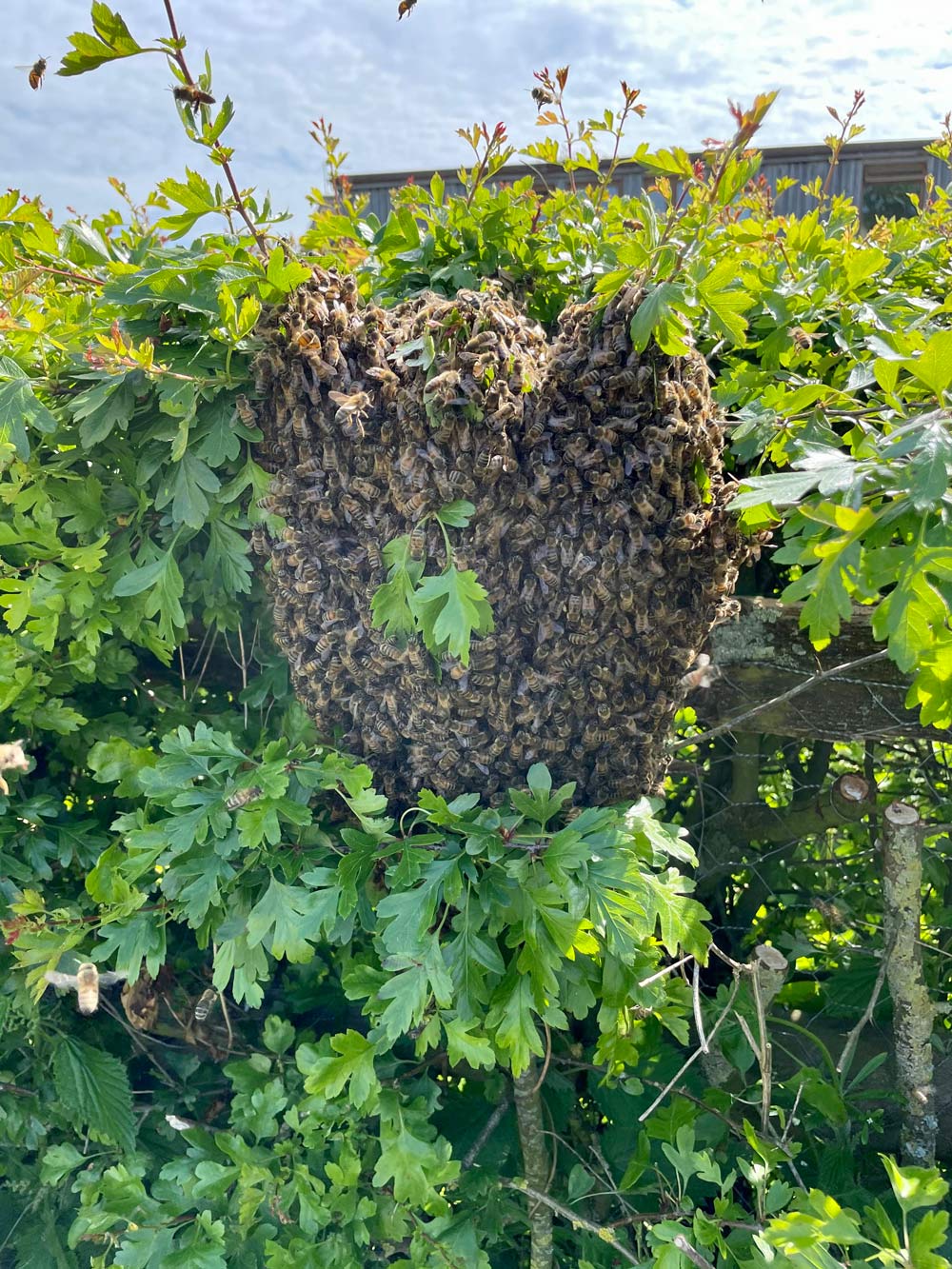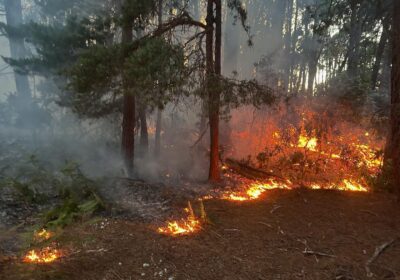Sandra Palmer-Snellin of the East Dorset Beekeeping Association provides advice to anyone who finds themselves with a swarm of bees in their garden
WHO are you going to call if you see the marvellously natural sight of thousands of bees swarming?
Eventually they may choose to alight in your favourite tree, garden bush or even the bird table, in what’s known as a cluster. Between April and June honeybees will follow their queen to find a new home. Remain calm, and it is sensible to keep your distance and keep children and pets indoors.
Remember, these vital pollinators need care and not a pest controller. It is much better for the bees’ survival if you phone your local beekeeping association to collect them, before the little scout bees decide your chimney is the ideal place to live! You can anticipate the bee swarm will rest for between a few hours and even two days before their scout bees have come back to tell them about a perfect permanent nest.
Firstly, a colony of bees prepares to swarm when they are raising lots of baby bees and it is getting a little crowded in their original hive. The queen bee decides to take half of the hive with her to find a new home. That could be between 1,500 and 30,000 bees, including workers – female bees – and drones – male bees.
Secondly, and most interestingly, the bees’ little tummies will be engorged with honey for their flight. Because of this they will be in a docile, passive state of mind. In addition, they do not have a home to defend!
Rest assured, East Dorset Beekeepers has a swarm co-ordinator who can be contacted via our website and will try to find someone to go to your home, free of charge, to collect them. These are passionate beekeepers who can help you. They are volunteers and, even if they are working and cannot attend immediately, a network of trained swarm collectors will be happy to remove them carefully, free of charge.
Your trained swarm collector will ask a number of questions to help you identify if you have honeybees, or if you are describing the nest of wasps or hornets. They may ask you to forward a photo if you are unsure. Be ready with your address and postcode, your best contact phone number and as much information about the swarm’s location as possible – such as ‘8 feet up in my apple tree’! It will really help if we know we need to bring a ladder with the other equipment.
Our friendly swarm collector will guide you through what happens on the phone and arrange to pop over if they are honeybees. You can learn a lot by watching from a safe area, preferably indoors.
To get the information and find out who to call, check out our interactive map on our new EDBKA website – www.edbka.org.uk/swarm
* You can also call 07714 289400 for advice.










Leave a Reply